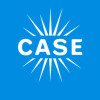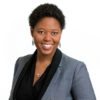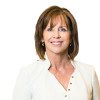Today is Opposite Day! Or should we say, today is not Opposite Day…
On this lighthearted day created to celebrate the unorthodox, we give pause and think about how we might apply the same paradoxical principles to our own work in the social sector. We asked ourselves, what would the world look like if a few key things got turned upside down and their opposites became the reality?
What if the majority of investments were Impact Investments?
In the world right now, most investments are still made without considering their environmental and social impact. In fact, of the estimated $212 trillion invested worldwide, only $60 billion has to date been identified as intentionally committed to impact investing. Today, we allow ourselves to imagine if the opposite were true: if essentially all investors sought to not only mitigate negative impact within their investments, but actively invested to improve social and environmental outcomes. What might the world look like if trillions of dollars were unleashed with the dual intent of catalyzing long-term, sustainable social change and making a profit? In this “profit with purpose” climate:
- Institutional investors would be equipped with the tools to build out diverse, impact portfolios.
- Individual investors would have a huge pipeline of new businesses to invest in, and impact would factor in to all of our investment options.
- Fund managers could develop competitive impact funds for all investors.
- Your entire 401K would be invested to intentionally create stronger communities, more sustainable environmental outcomes, greater social equity, better treatment of employees in all sectors and improved schools and access to education globally.
- Social businesses would have access to the kind of scale-fueling dollars that allow them to create positive outcomes in communities all over the world.
- Markets would have the capacity to track financial and social performance bolstering investor confidence.
- Philanthropic dollars and government efforts would be matched with fully committed capital markets, driven to do more than maximize profits.
In this opposite world, the possibilities seem endless when impact investments are the norm and the private sector is fully harnessed to tackle our most entrenched social issues.
What if the majority of new high-growth startups were lead by diverse teams?
Right now, most companies funded through venture capital are founded by white men, making for a very homogenous startup community that tends to exclude women and entrepreneurs of color. Recent research found that 85 percent of all venture capital–funded businesses have no women on the executive team, only 2.7 percent had a woman CEO and less than one percent have an African-American founder. And yet, a growing library of research suggests that teams with a diversity of race, ethnicity, gender and sexual orientation are more innovative than homogeneous groups, and that diverse companies perform better financially. So what if we flipped these statistics on their head? What if the majority of high-growth companies with venture capital funding were lead by diverse teams of entrepreneurs?
- Diverse entrepreneurs would have access to valuable social capital through new networks and mentorships.
- By moving more investments to diverse teams, we would get more successful entrepreneurs who represent diverse communities. This would mean our leaders, investors and entrepreneurial decision-makers would have those same valuable diverse backgrounds and experiences that make their companies successful.
- More venture capital firms would include women executives and executives of color in the funding decision-making process, which, if similarity bias research holds true, would distribute venture capital funding more evenly among diverse entrepreneurs.
- A new generation of young entrepreneurs would be inspired, and current women entrepreneurs and entrepreneurs of color may have a chance for funding because they’re being noticed for the first time.
This topic is complicated for many reasons, but one thing is clear: when we have an inclusive entrepreneurial ecosystem, we have more people sitting at the table to help push us forward and innovate, create economic growth and strengthen communities.
What if instead of erring on the side of caution, we all decided to Be Fearless?
Too often today, those of us charged with finding or funding solutions to social challenges — philanthropists, government, nonprofits — seem to be moving too slowly and often operating with the same set of tools, concepts and caution of the generations before us. But what if failure wasn’t a limitation? What if taking risks was the status quo? What kind of world would you imagine?
In this fearless world, we would all:
- Make big bets and make history – which is what the Levi Strauss Foundation did when it embraced the company’s 160-year pioneering legacy and was able to create an innovative new approach to investing in San Francisco’s rising social change.
- Experiment early and often – as demonstrated by the Salesforce Foundation, which revolutionized corporate philanthropy through its innovative 1-1-1 model, giving 1 percent product, 1 percent equity and 1 percent employee time for philanthropic purposes.
- Make Failure matter – just like the Jacobs Family Foundation did when it transformed an abandoned lot, took on an experimental initial public offering and ultimately transformed its business model from traditional grantmaker to place-based funder to maximize impact without sacrificing its core values and mission.
- Reach beyond our bubble – and follow in the steps of Global Health Corps, which was formed by six diverse strangers with a shared vision to spark and nurture unlikely partnerships among very different young people from around the world to impact global health.
- Let urgency conquer fear – which compelled the senior leadership team at Share Our Strength to make big bets aimed at ending childhood hunger in America.
When global challenges seem overwhelming, we would set out to create unlikely partnerships, experiment with new thinking and set audacious goals—just like these fearless leaders highlighted above have done.
To build a better world, to make a real difference, we have to take bigger risks, make bigger bets, and fail forward; in short, we have to Be Fearless. These opposite worlds may be hard to imagine, and there are certainly hurdles to get there, but we, along with our partners in each of these areas, are working every day to make them a reality.
Ready to join us? Get started with the Be Fearless Action Guide, which offers step-by-step tools to help you take risks, be bold and fail forward.
Editors Note: On a previous version of this blog post the size of markets estimates quoted from the USSIF and the GIIN were incorrect and have been modified.





